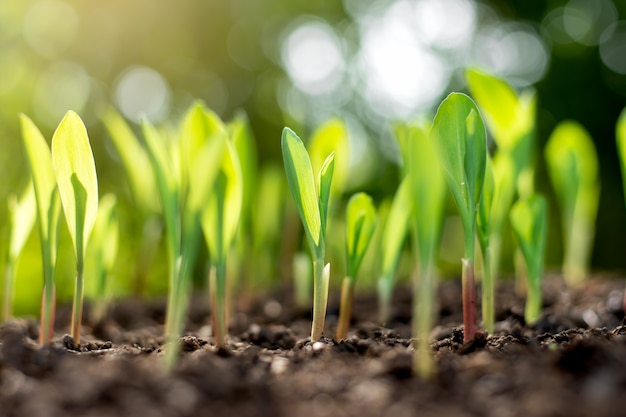

Dent corn, aka grain corn, might be used in cornmeal flour or tortillas. Some, like flint corn, may be ornamental. One thing that's pretty important, is to pay attention to the type corn you're ordering. As the kernels form, there won't be any issues caused by restricted water access. If the corn has good light exposure and plenty of nutrients, it will be able to grow to its maximum potential. This conserves water and makes it much easier for you to water your plants. But sub-irrigated planters (SIPs) have the added advantage of a huge water reservoir. The same spacing applies as with raised beds. SELF-WATERING PLANTERS: If you want to achieve the maximum harvestability, try growing your corn in a: Sub-irrigated Planter. But don't go any tighter or the corn might not get good pollination. For a 4 foot wide bed you could easily fit 5 rows or even up to 6. In a 2 foot wide bed, I'm able to squeeze 3 staggered rows of corn. Rather than 1 or 2 long spanning rows, create shorter rows placed alongside each other. If so, the maximum recommended depth is 4 feet. So don't make the bed any deeper than that, unless you have access from both sides. Most people can reach about 2 feet into a bed to access their plants. Since raised beds are traditionally set up so that you will not step in them, they cannot get too wide. RAISED BEDS: Growing corn in raised beds is very simple.
Corn seedlings falling over how to#
Urban Garden Style! You can get a nice harvest of sweet corn from just a few 30 gallon totes! How to Grow Corn in Raised Beds or SIPs SIP Self-Watering Containers (wicking totes) Expect to grow around 11 corn plants in a 30 gallon tote. You can even create a water reservoir, making them into self-watering containers: 30 Gallon SIP Tote. Totes are pretty cheap and will have a more stable base.

Corn seedlings falling over upgrade#
In a properly sized 2 cubic foot pot, expect to grow 5 or 6 corn plants.ģ0 GALLON TOTES: Growing corn in 30 gallon totes will provide a modest upgrade over traditional containers. This will reduce the quality of your harvest. And as the corn stalks get tall, your pot will be constantly running out of water. The small amount of potting mix will get quickly depleted of nutrients. A 12 inch wide container does not have a wide enough base to prevent it from tipping over in the wind. Even when you select a dwarf variety, it can still get top heavy. This includes the ability to maintain consistent moisture levels.ĭo not use 12 inch wide containers! Corn gets pretty tall. That's the MINIMUM you need for structural stability as well as adequate root space. A 16 inch deep, 18 inch wide pot will require nearly 2 cubic feet of potting mix. But that translates into a large 18 inch pot. The narrow portion at the base needs to be 12 inches. Don't restrict yourself to a 12 inch wide pot. If you're serious about getting a real harvest the container needs to be at least 12 inches deep, but 16 inches is preferred. Absolutely! But you need the right sized pot. How to Grow Corn in Raised Beds or SIPsĬONTAINERS: If you're a renter, or simply live in an urban area, you might wonder if you can grow corn in pots or containers.How to Grow Corn in Containers or Totes.Let me share my tips for growing large, sweet corn. You can even grow corn in pots or containers! I've been growing corn for years, with great success. Conventional wisdom dictates that you need lots of space for growing corn. Some people are surprised at how easy it can be to grow, even in small spaces. Homegrown sweet corn is so delicious and satisfying. Although it's common to grow vegetables in conventional plots, what about in urban garden settings?

But as home gardeners, we can take control of our food supply, growing corn right in our backyards. How to Grow Corn in Your Backyard Garden!Īccording to the National Agricultural Statistics Service (NASS), corn is the largest crop grown in America, covering over 92 million acres! Of course, much of big agriculture's corn is monocultural GMO, not the kind we want to eat.


 0 kommentar(er)
0 kommentar(er)
